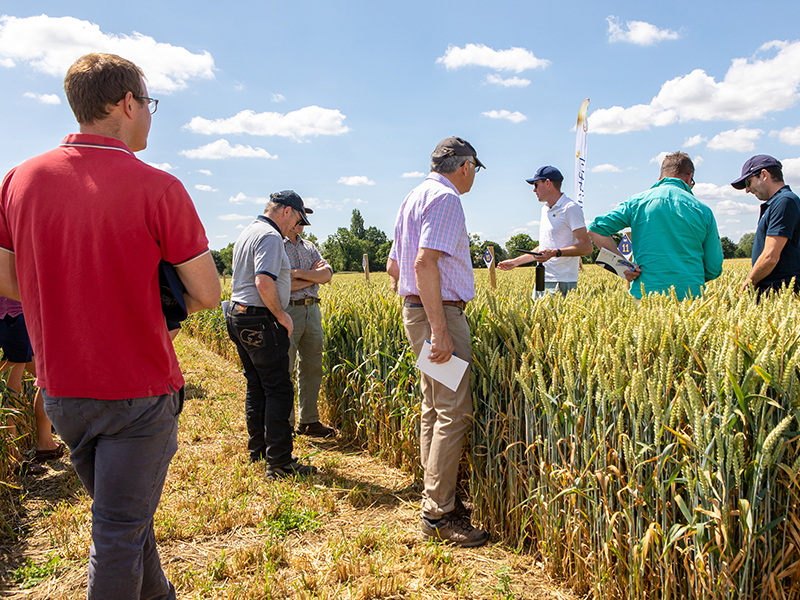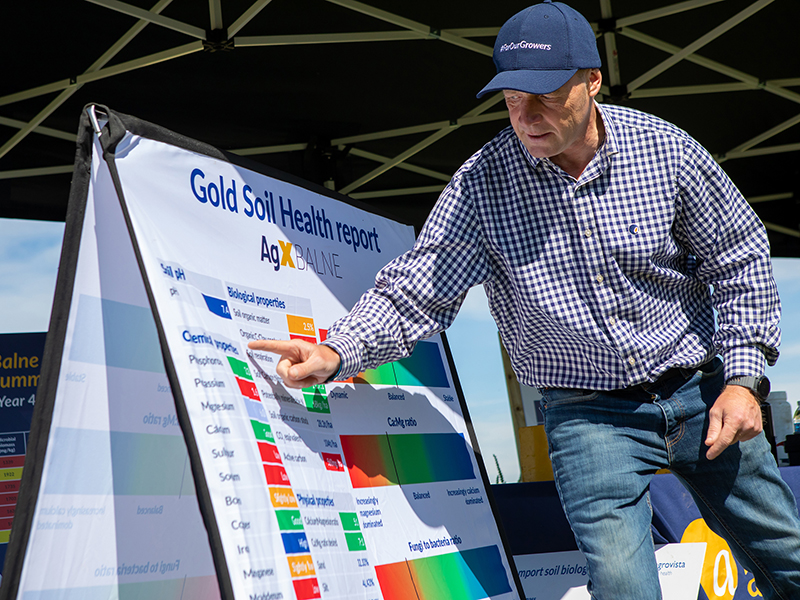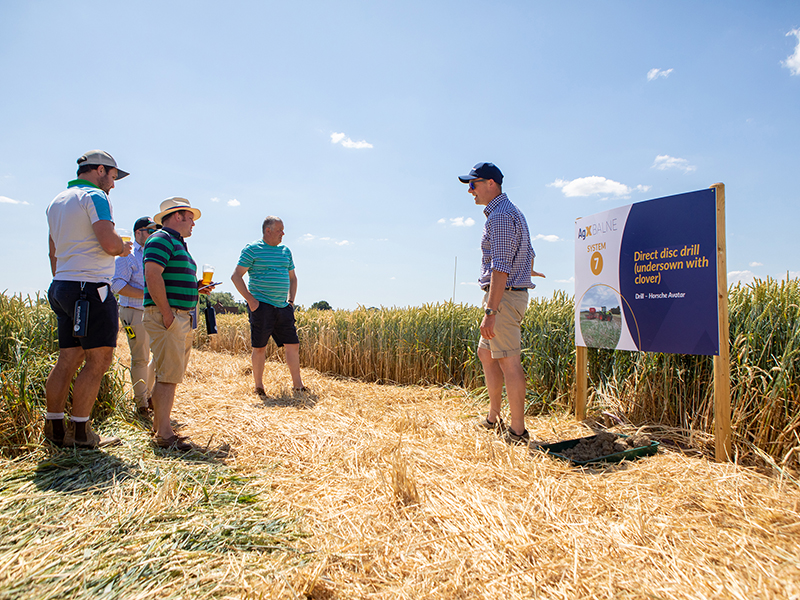Harvest may have begun, but more than 200 people still found time to attend a recent open day at Agrovista’s AgX trial site at Balne, North Yorkshire.
Fungicide trials on winter wheat were a key attraction at the event, where exceptional Septoria tritici pressure reinforced the message that it is no longer possible to rely on fungicides alone to keep crops clean.
“I can’t recall seeing such high Septoria levels,” said Agrovista technical agronomist Chris Dickinson. “It was certainly the worst season since the ban on chlorothalonil in spring 2020.
“Even the best chemistry couldn’t control Septoria entirely, and no variety alone performed brilliantly. The disease can still be managed, but we are now very much looking at a combination of variety and chemistry now we have lost chlorothalonil.”
Modern active ingredients such as Inatreq and Revysol are now the foundation of most winter wheat fungicide programmes. “We could see to a line where these were omitted,” Chris said. “You could get away with older, less effective chemistry on cleaner varieties, but you need to keep rates up.”
Inatreq and Revysol need to be used responsibly to maintain their efficacy, Chris said.
“That means maintain robust rates on more susceptible varieties to minimise selection pressure for resistance. We could see what this added to performance on a variety like Skyscraper. I’d also recommend using bioscience in this sort of situation to help plants ward off disease pathogens.”
The effectiveness of a bioscience programme was clearly demonstrated by comparing a full-rate fungicide plot with one that received half-rate fungicide plus bioscience treatment, with the latter visually providing the same level of control for a saving of about £10/ha. “But you have to be careful,” Chris said. “You need to make sure conditions are right for this, perhaps targeting it on something like Extase drilled later.”
Adding strobilurin at T1/T2 resulted in a greening effect on the crop. “Again, as with biostimulants, this helped the plant looked after itself, rather than being a direct effect on the Septoria. We saw it clearly during last year’s drought, but it was also evident this season. So that could be another addition that could improve the overall picture.”
Other steps to combat Septoria included drilling date. “Any variety drilled very early in the autumn is picking up a lot of Septoria and carrying it through, putting an awful lot of pressure on in the following spring,” said Chris.
“The effect this can have been clear, even on a strong variety like Extase – if you drill it early in September, you could reduce its resistance score by over 1 point compared with mid October.
“It’s all about attention to detail – the penny’s going to have to drop a bit more with this integrated approach. Varieties really are a key tool. We need to use ones with strong Septoria resistance, while heeding their other strengths and weaknesses – choose a less resistant variety and you risk not being able to control the disease cost effectively.”


Establishment trials
Seven different establishment trials on the heavy clay loam at Balne using machines from Vaderstad, Sumo, Amazone and Horsch provided plenty of talking points for visitors.
Ploughing, deep till, shallow till, low-disturbance cultivation, strip till and direct drilling (disc and tine) were all put to the test. “All the plots looked really good on the day, despite all having had their pros and cons through the season,” said Chris.
“We carried out NDVI mapping from March to May as a measure of crop growth. The ploughing plot was structureless in the autumn, but it had good NDVI readings as spring progressed, reflecting its heathy development that was evident on the ground due to the compaction removed by the plough.
“On the other hand, the direct-drilled plot produced a more resilient soil surface through autumn and winter as far as travelling was concerned, but the crop was more droughty during the heatwave, reflecting some rooting restriction at depth.
“The best performer was the deep-tilled plot, which always led the way with NDVI. However, as we got nearer to full canopy they all evened up.
“It will be interesting to see what this means at harvest. Will the initial fast growers end up being too thick? Is slower growth better, encouraging more light leaf interception on lower leaves?
“Do we perhaps need to change the way we look at crops and crop growth, especially when we take into consideration the effects of cultivation on soil health?”



